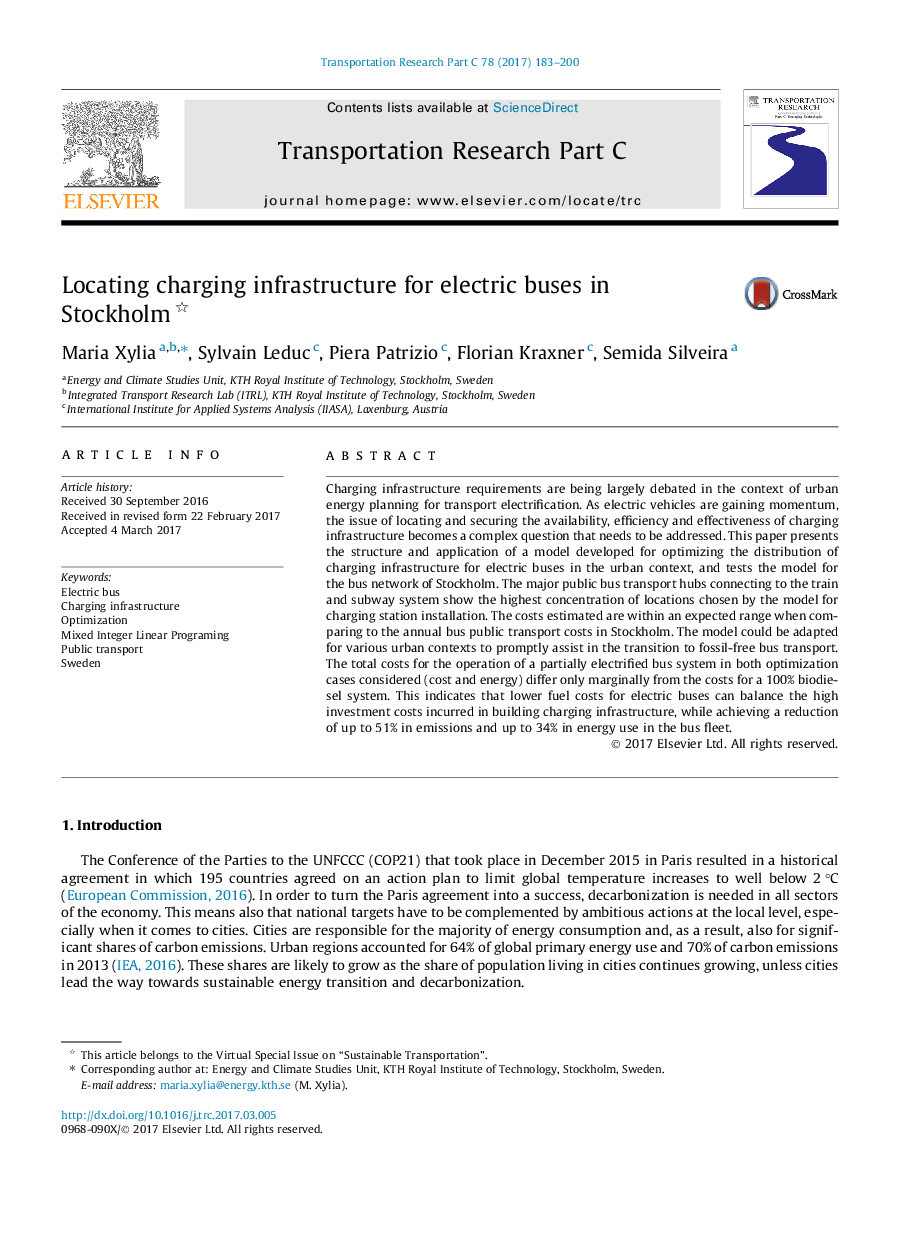| Article ID | Journal | Published Year | Pages | File Type |
|---|---|---|---|---|
| 4968514 | Transportation Research Part C: Emerging Technologies | 2017 | 18 Pages |
Abstract
Charging infrastructure requirements are being largely debated in the context of urban energy planning for transport electrification. As electric vehicles are gaining momentum, the issue of locating and securing the availability, efficiency and effectiveness of charging infrastructure becomes a complex question that needs to be addressed. This paper presents the structure and application of a model developed for optimizing the distribution of charging infrastructure for electric buses in the urban context, and tests the model for the bus network of Stockholm. The major public bus transport hubs connecting to the train and subway system show the highest concentration of locations chosen by the model for charging station installation. The costs estimated are within an expected range when comparing to the annual bus public transport costs in Stockholm. The model could be adapted for various urban contexts to promptly assist in the transition to fossil-free bus transport. The total costs for the operation of a partially electrified bus system in both optimization cases considered (cost and energy) differ only marginally from the costs for a 100% biodiesel system. This indicates that lower fuel costs for electric buses can balance the high investment costs incurred in building charging infrastructure, while achieving a reduction of up to 51% in emissions and up to 34% in energy use in the bus fleet.
Keywords
Related Topics
Physical Sciences and Engineering
Computer Science
Computer Science Applications
Authors
Maria Xylia, Sylvain Leduc, Piera Patrizio, Florian Kraxner, Semida Silveira,
